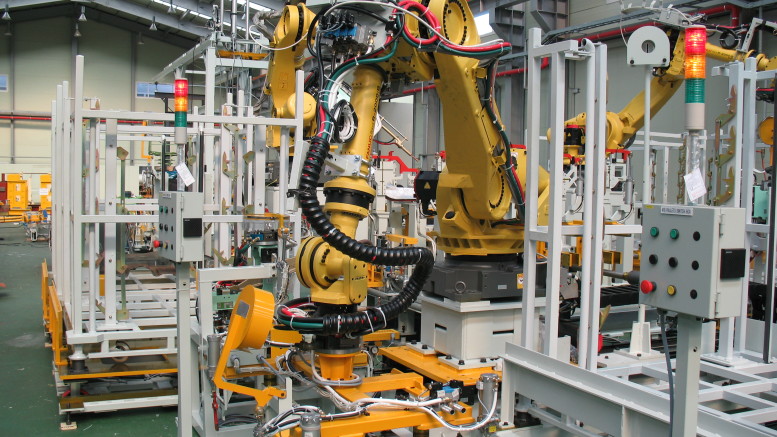Over the years, for many and varied reasons, SBA loans have generated not only an amazing number of loans for small businesses, but, along the way, have generated a great number of mis-understandings and mis-conceptions driving some negativity about this very beneficial program.
Look first at the numbers for the SBA 7(a) lending in South Carolina alone. 2015 saw 449 loans totaling over $275 million. In 2014, there were 355 loans for $206 million and in 2013, the number was 316 loans for over $200 million.
It is difficult for me to find fault in a program (yes, even a government guaranteed program) that helps 1120 businesses in three years by approving over $680 million in loans just in our state. These funds were used to acquire or expand businesses, improve cash flow and allow for more jobs in our state.
And, since the SBA is self-funded, no taxpayer money is used to support the program.
A key to a successful SBA loan application begins with finding a lender interested in making manufacturing loans in the first place. Lenders are like manufacturers, with specific skills, knowledge and credit requirements. Look for an experienced SBA lender with manufacturing expertise. Look for an expert who knows the process and who has the experience to guide to you through it.
Second, understanding the basic benefits of an SBA loan are important so that you can determine if you can profit from some of the inherent attributes included in the program.
For instance, you can achieve Improved Cash Flow
The SBA’s loan programs are generally intended to encourage longer term small-business financing. Loan maturities have been established: 25 years for real estate, up to 10 or 15 years for equipment (depending on the useful life of the equipment) and generally up to seven years for working capital.
As long as you make your payments, you do not have to worry about a balloon or call
Balloon payments or call provisions are not allowed on any 7(a) loan except SBA Express loans. The lender may not charge a prepayment penalty if the loan is paid off before maturity, but the SBA will charge the borrower a prepayment fee if the loan has a maturity of 15 or more years and is prepaid during the first three years.
Keep your cash with a lower cash injection
SBA loans can finance up to 90 percent of commercial real estate, freeing up cash for use elsewhere in the business. Often existing debt can be refinanced with no additional cash injection!
A Lack of collateral does not always mean NO
The SBA expects every 7(a) loan to be fully secured, but the SBA will not decline a request to guarantee a loan if the only unfavorable factor is insufficient collateral, provided all available collateral is offered. This means every SBA loan is to be secured by all available assets (both business and personal) until the recovery value equals the loan amount or until all assets have been pledged (to the extent that they are reasonably available).
Personal guarantees are required from all owners of 20 percent or more of the equity of the business, and lenders can require personal guarantees of owners with less than 20 percent ownership. Liens on personal assets of the principals may be required.
SBA provides loans to businesses — not individuals — so the requirements of eligibility are based on aspects of the business, not the owners. As such, the key factors of eligibility are based on what the business does to receive its income, the character of its ownership and where the business operates.
So, what sort of business’s are eligible?
SBA generally does not specify what businesses are eligible. Rather, the agency outlines what businesses are not eligible. However, there are some universally applicable requirements. Principally, to be eligible for assistance, businesses must be owner occupied (ie: no investor or speculative loans) by a US citizen or Legal Permanent Resident, operate for profit, be engaged in, or propose to do business in, the United States, be able to demonstrate a need for the loan proceeds and propose to use the funds for a sound business practice. An experienced SBA lender can tell you quickly if you and your business qualify for consideration.
In summary, while SBA loans do not fit every situation, they can fit most circumstances. Improved cash flow, lower cash injection and the security of knowing there cannot be a call (unless you do not make your payments!) all add up to a program which may provide you and your business with the funds to grow and prosper.

Photograph of Paul Pickhardt of The Palmetto Bank in Greenville, SC on 11/19/14 by photographer Stephen Stinson.
Paul Pickhardt is the SBA Manufacturing Lending Manager at United Community Bank. He and his wife have lived in the Greenville area for nearly 15 years and have two adult children. Pickhardt has been involved with many community organizations, including the Greenville Area Chamber of Commerce, Upstate SCORE and the Small Business Development Center (SBDC). Pickhardt is also a Vietnam Veteran who honorably served his country as a Captain in the U.S. Army.


Be the first to comment on "SBA Lending For Manufacturers – An Introduction"